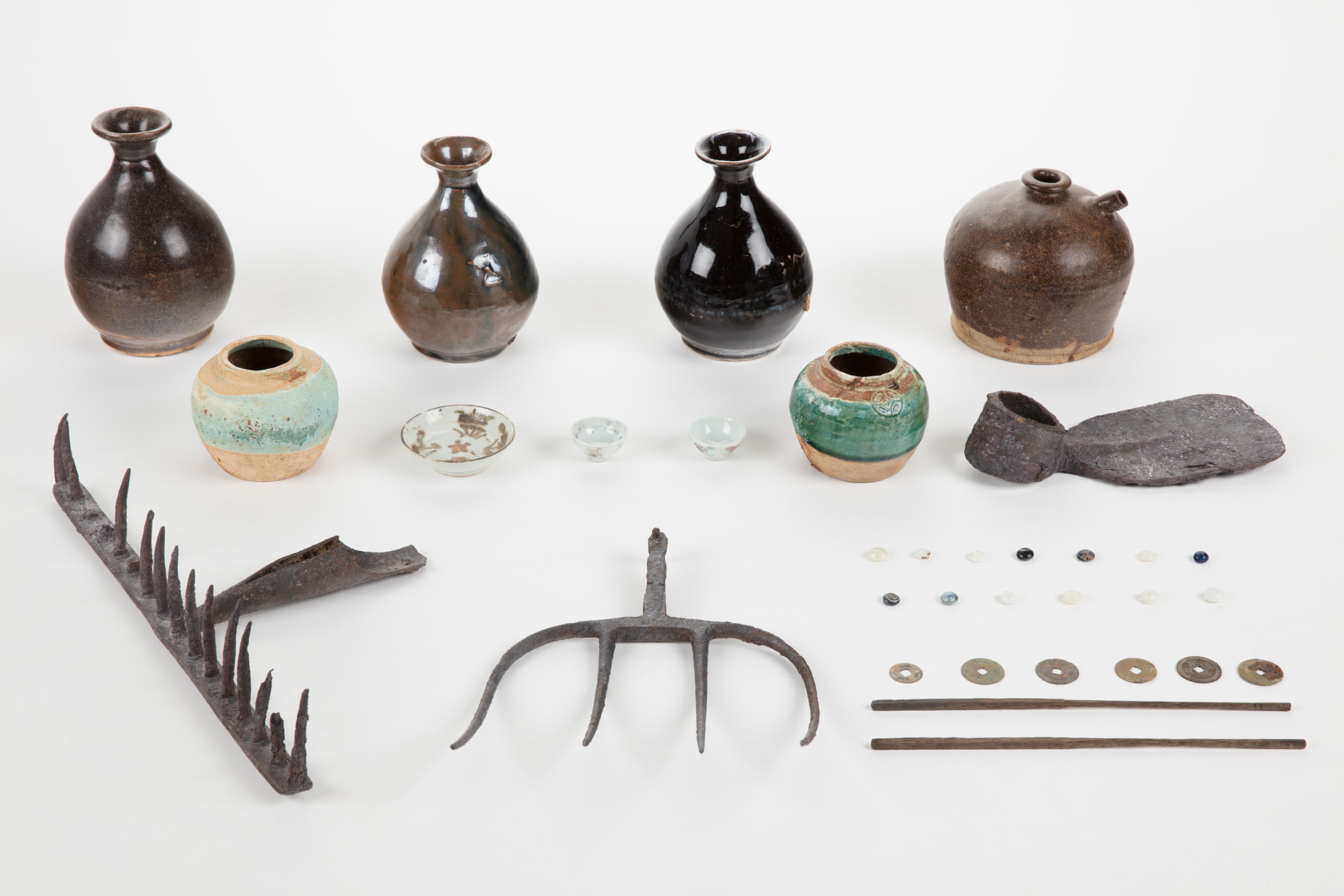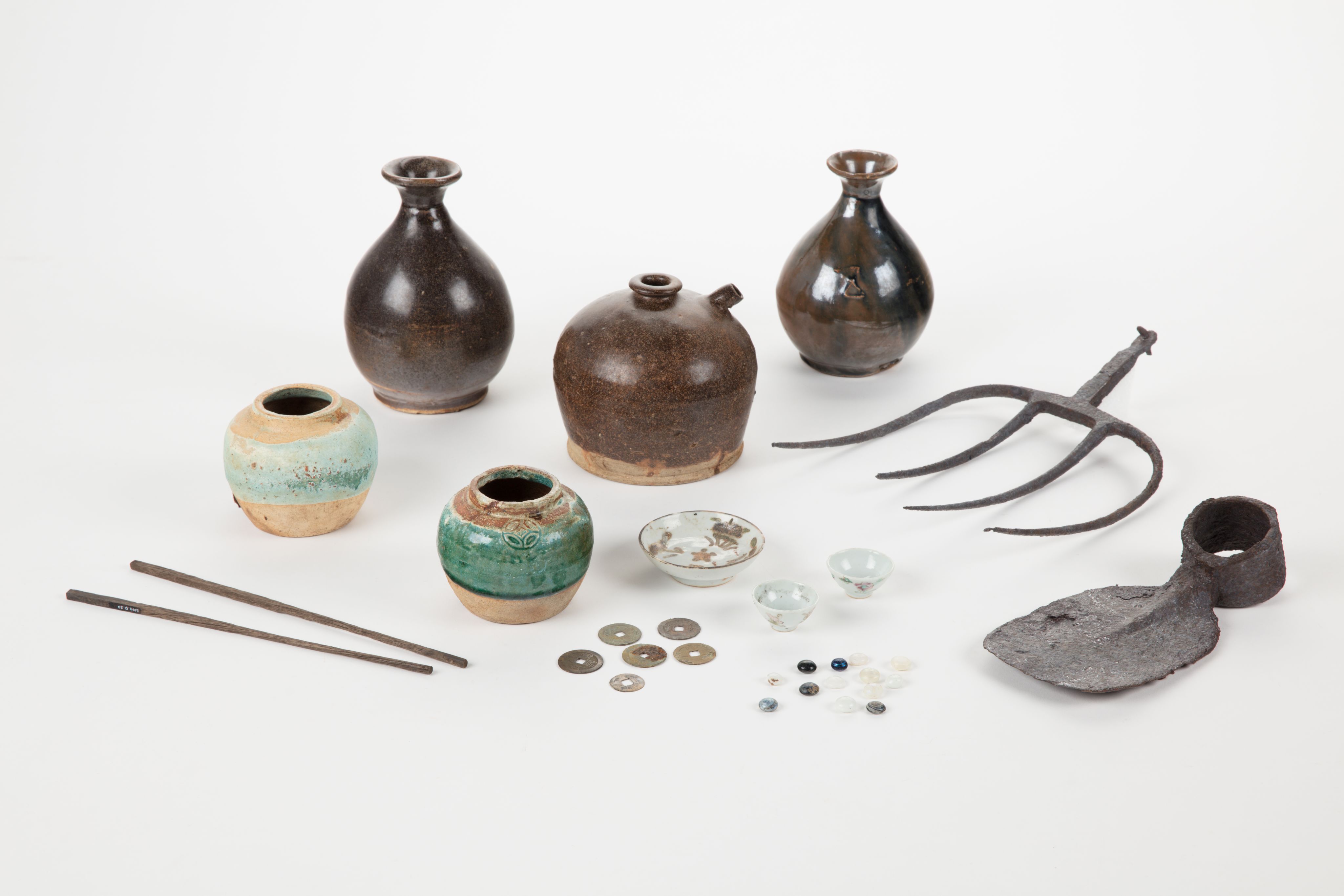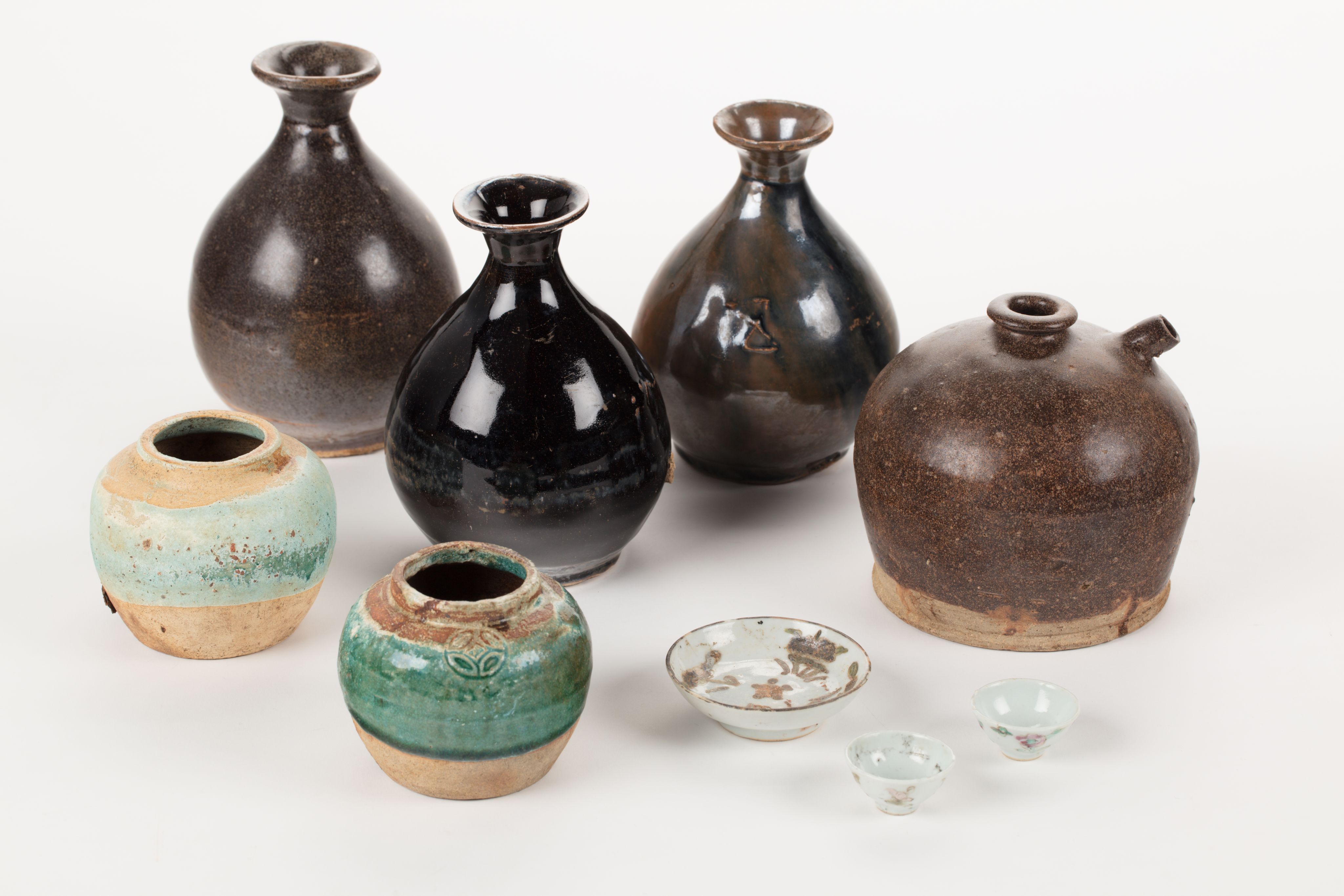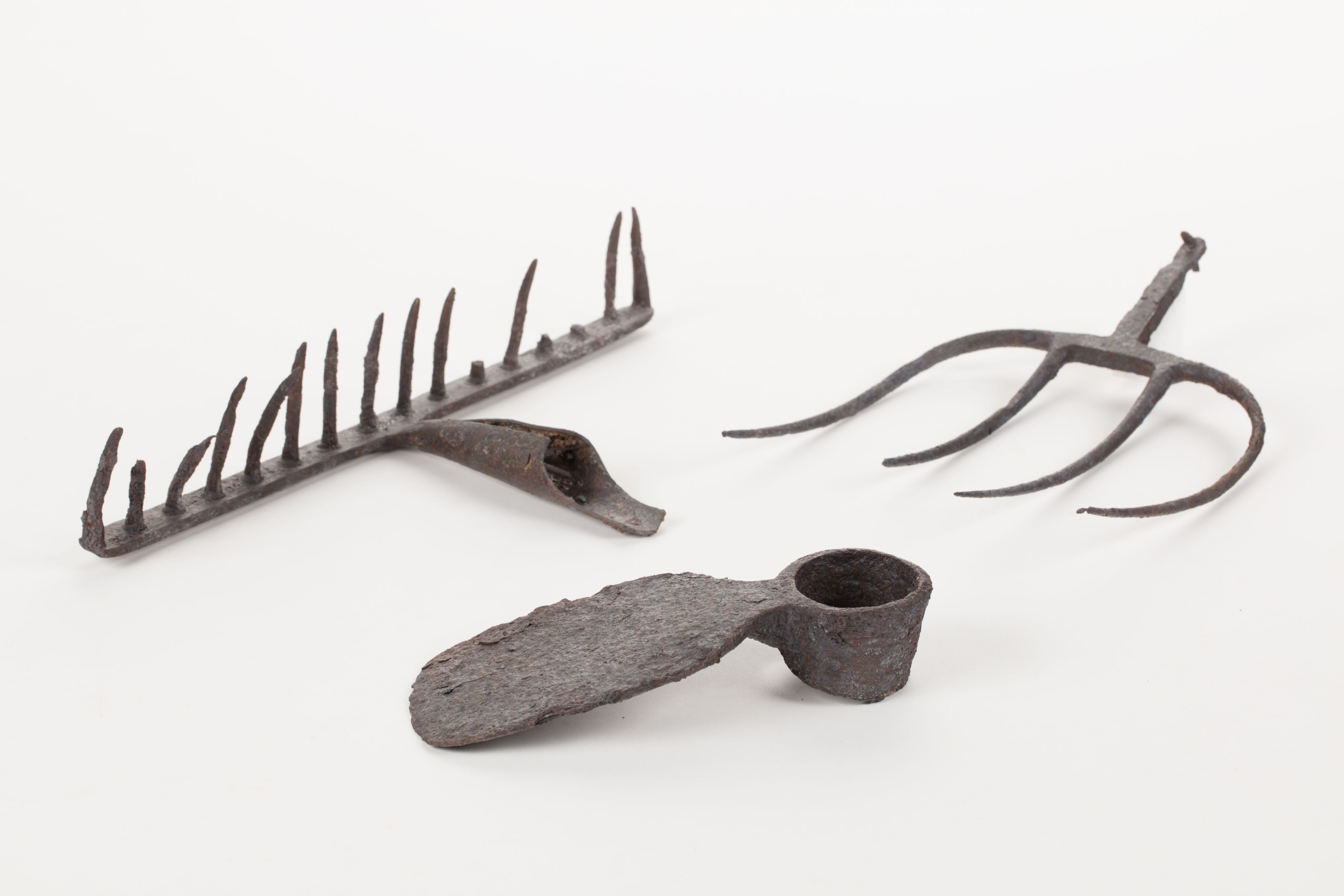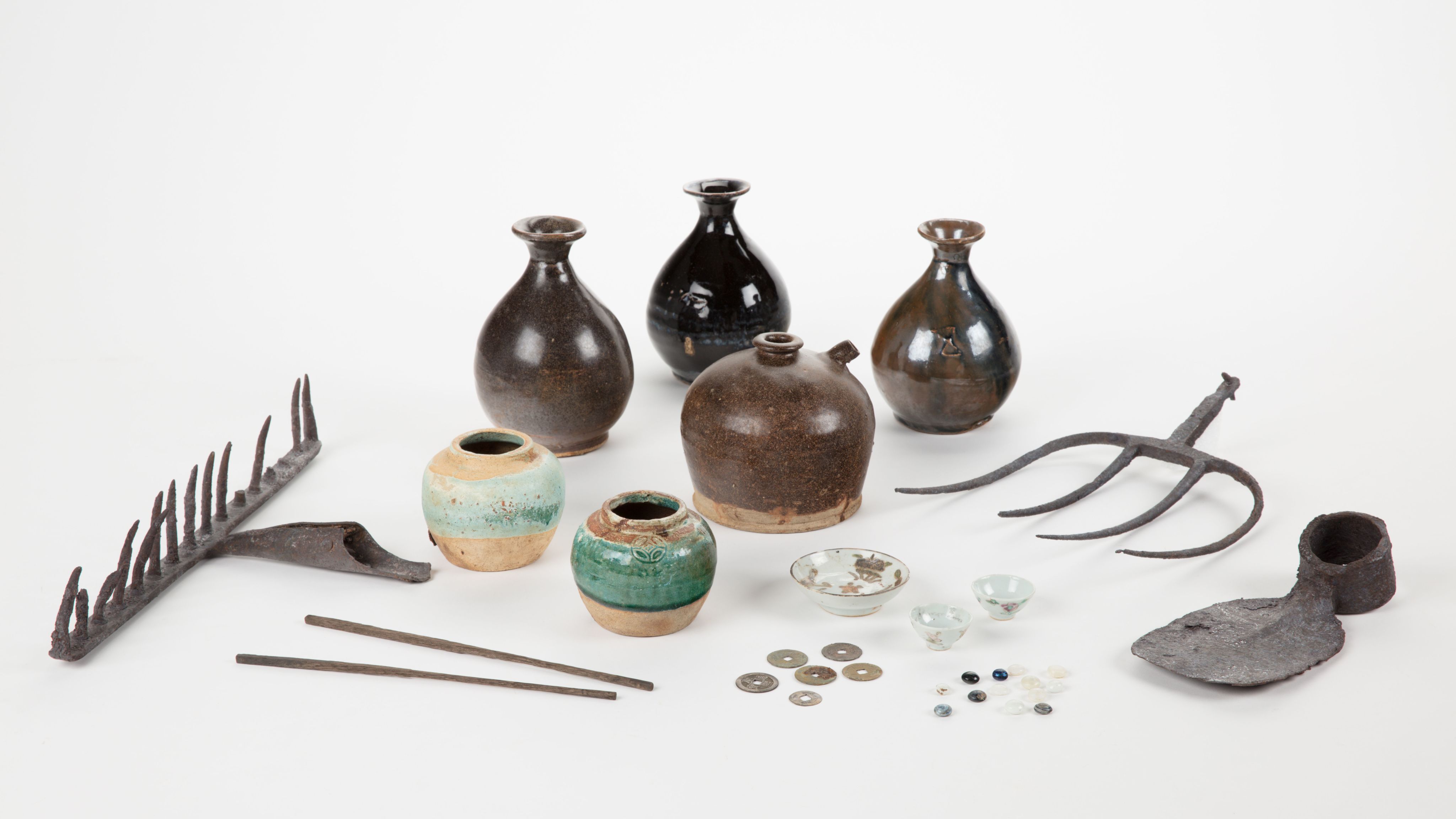Ah Chee Collection
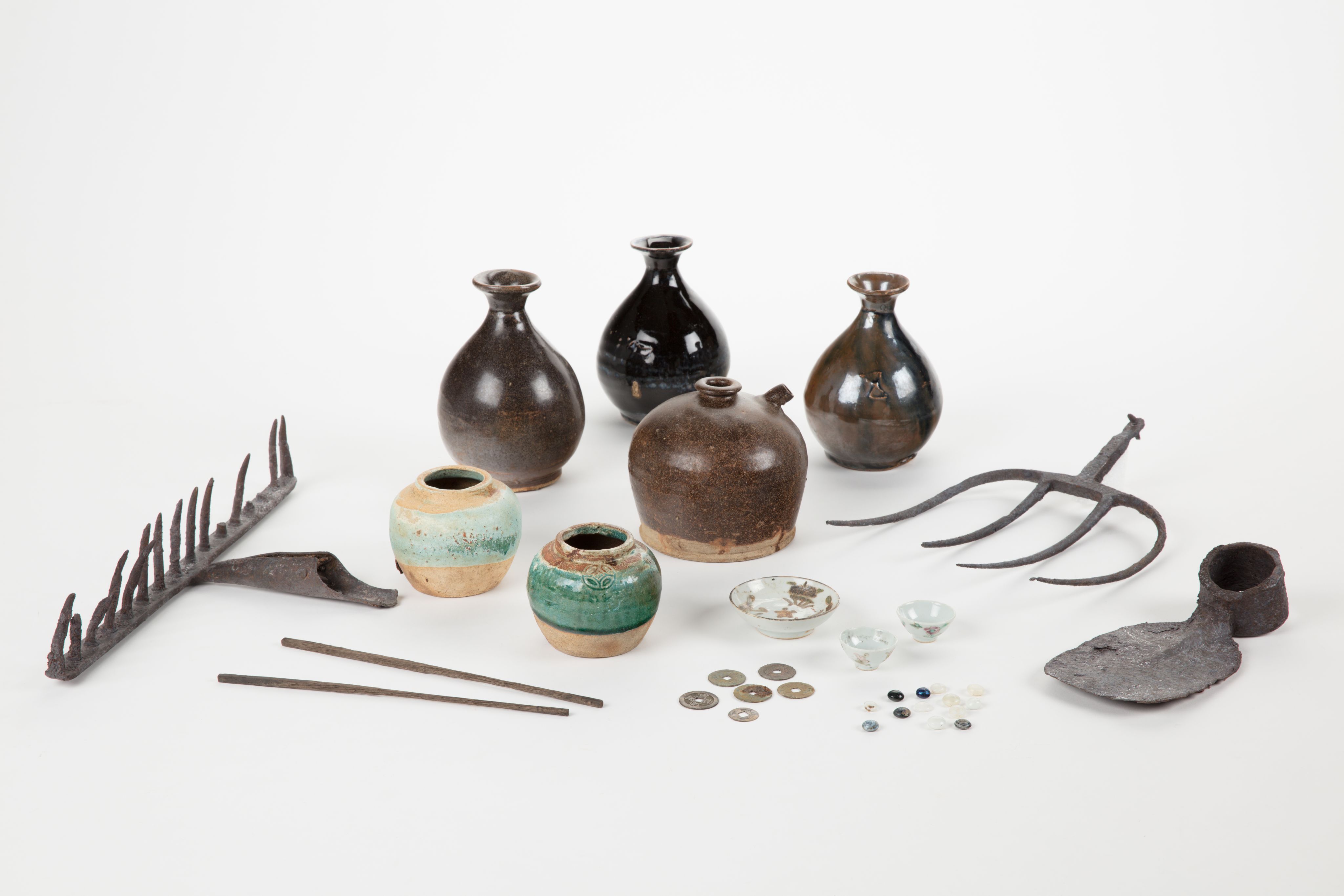
Introduction
This collection of artefacts from the home and market garden of the Ah Chee family tells the remarkable story of some of the earliest members of the Chinese community in Auckland. From 1882 to 1920, Chan Ah Chee, Lian See (also known as Joong Chew Lee and Rain See) and their children lived on a market garden site beside Stanley Street in Parnell. From there, they ran one of the most successful fresh produce businesses in Auckland and established international trading networks across the Pacific and beyond. The garden tools, kitchen crockery, games and many other items found during the archaeological excavation of the site uncovered a rich world of family and community practices, networks, knowledge and values that reflect the Ah Chee family’s experiences of migration, settlement and participation in later 19th- and early 20th-century Auckland.
Chan Ah Chee arrived in Auckland from China in 1877. He was one of many who left the agricultural province of Guandong (also known as Canton) in the late 19th century looking for gold and other opportunities in places such as New Zealand, Australia and California. In 1882, Ah Chee leased reclaimed swamp land at the bottom of the Auckland Domain in the industrial area of Mechanics Bay (Te Tōangaroa) and began converting it into a market garden, using many of the cultural practices and horticultural techniques he brought with him from China.
Shortly after he established the market garden, Ah Chee opened his first greengrocer store in Queen Street. As the business expanded, he opened several more stores across central Auckland as well as opening dining rooms that offered meals and board for visitors to the city. Ah Chee also began building international connections by supplying fresh produce to cruise ships visiting Auckland, establishing ginger and banana plantations in Fiji, exporting New Zealand tree fungus (wood ear) to China, and shipping seafood and tobacco to China and San Francisco.
In 1886, Ah Chee married Lian See, a highly educated woman from China who spoke fluent English. Their wedding, thought to be Auckland’s first Chinese wedding, was reported in local newspapers. Although the Ah Chee family participated in the social and cultural lives of European settlers, they also suffered instances of racial abuse, which reflected the wider attitudes in New Zealand towards the Chinese community at the time. From 1881, Chinese immigrants were subjected to restrictive immigration policies which included an entry tax (known as a poll tax). The Ah Chees maintained close links with China, and as the business expanded, they supported Chinese workers to come and live and work in their market gardens in Auckland.
Chan Ah Chee and Lian See returned to China in the 1920s, but their children continued running the business. In 1958, their grandson, Thomas Ah Chee, opened the first American-style supermarket in New Zealand, which he named Foodtown. Foodtown became a well-known supermarket chain across New Zealand for many years and was eventually rebranded as Countdown in 2011.
Text by Lucy Mackintosh
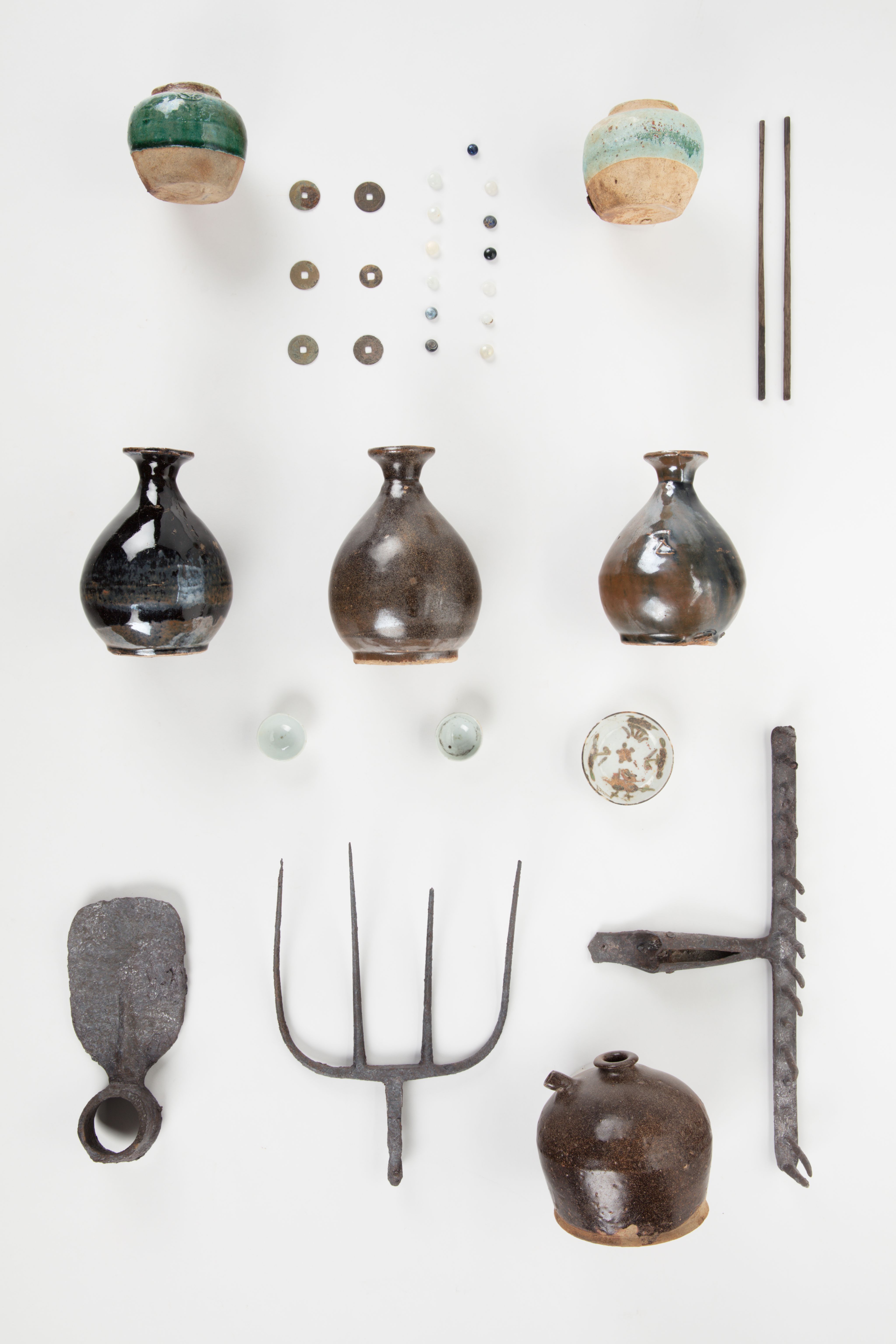
Images
Videos
Hans Bader and Janice Adamson, archaeologists who worked on the Carlaw Park dig, discuss the Ah Chee Collection with Lucy Mackintosh (Senior Research Fellow, Auckland Museum).
Ah Chee family members Bonnie Lynch, Merv Ah Chee and Louise Chin discuss their family history with Lucy Mackintosh (Senior Research Fellow, Auckland Museum).
Object Information
Archaeological Assemblage, Carlaw Park
Collections Online: https://www.aucklandmuseum.com/discover/collections/search?tag=Ah-Chee-Collection
Further Links
Adamson, B., & Bader, T. (2013). Gardening to prosperity: The history and archaeology of Chan Dah Chee and the Chinese market garden at Carlaw Park, Auckland. In M. Campbell, S. Holdaway, & S. Macready (Eds.), Finding our recent past: Historical archaeology in New Zealand (NZ Archaeological Association Monograph 29). Retrieved from http://www.archaeologysolutions.co.nz/wp-content/uploads/2014/03/Adamson-and-Bader-NZAA-monograph-29.pdf
Australia & New Zealand Environmental History Network. (2011, August 24). 陈达枝 Chan Dah Chee (1851–1930). Retrieved from https://www.environmentalhistory-au-nz.org/2011/08/%E9%99%88%E8%BE%BE%E6%9E%9D-chan-dah-chee-1851-1930/
Mackintosh, L. (2021). "The ideal home": The Ah Chee market gardens and Pukekawa Auckland Domain. In Shifting Grounds: Deep Histories of Tāmaki Makaurau Auckland. Bridget Williams Books. Retrieved from https://nzhistorycollection.bwb.co.nz/collection-books/9781988587301/the-ideal-home
Te Puna Mātauranga o Aotearoa National Library of New Zealand, Services to Schools Staff. (n.d.). Chinese New Zealanders 1880s–1940s: Building lives. Digital New Zealand. Retrieved from https://digitalnz.org/stories/623135de81645e001ab83ad4
Wassilieff, M. (2008). Market gardens and production nurseries. Te Ara - The Encyclopedia of New Zealand. Retrieved from https://teara.govt.nz/en/market-gardens-and-production-nurseries
White, G. (2021, May 18). Aghan Brothers. Auckland War Memorial Museum - Tāmaki Paenga Hira. Retrieved from https://www.aucklandmuseum.com/war-memorial/online-cenotaph/features/Alfred-Aghan


